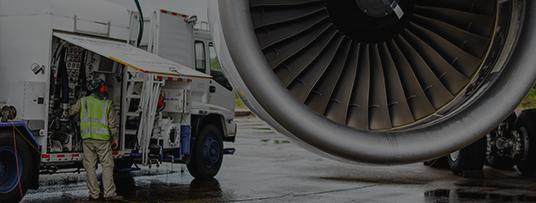In aircraft control systems, the rudder plays a subtle yet essential role in shaping flight behavior. While ailerons and elevators often dominate discussions about maneuverability, the rudder is often overlooked despite its importance in managing an aircraft's directional stability and coordination. In this blog, we will cover how aircraft rudders function, their role in flight dynamics, and the key considerations for mastering their use.
The rudder is a vertically mounted control surface located on the edge of the vertical stabilizer at the aircraft's tail. Its primary function is to control yaw, which is the horizontal rotation of the aircraft about its vertical axis. When the pilot applies pressure to rudder pedals in a cockpit, the rudder surface deflects to the left or right in response, redirecting airflow across the tail and altering the direction of the nose. This function is essential not only for turning the aircraft, but also for correcting asymmetrical flight conditions like adverse yaw or engine failure in multi-engine aircraft.
As already stated, pilots control the rudder using foot pedals, where pressing the left pedal deflects the rudder left, and vice versa. Nose movements match the deflection of the rudder surface, where a leftward deflection will cause the nose to move similarly. The various parts of this system are typically connected mechanically, hydraulically, or electronically through a fly-by-wire interface, depending on the aircraft model.
In a properly coordinated turn, rudder input balances the horizontal component of lift and prevents the aircraft from skidding outward or slipping inward. Pilots use a "ball" featured on the dial of the turn coordinator to monitor slip and skid conditions, being sure to apply just enough rudder deflection to keep the aircraft balanced.
When an aileron is deflected to roll the aircraft, it creates drag on the descending wing, causing the nose to yaw in the opposite direction of the turn. A touch of rudder in the direction of the roll counters this adverse yaw, smoothing out the turn.
During takeoff and landing in crosswind conditions, the rudder is often used to align the aircraft with the runway. This prevents the nose from drifting off course by neutralizing the effects of wind acting on the side of the fuselage.
In twin-engine aircraft, an engine failure on one side can cause severe yaw due to asymmetric thrust. The rudder provides the necessary control input to counteract this imbalance, allowing the aircraft to maintain straight, level flight.
One of the most frequent issues among new pilots is applying too much rudder or abruptly making changes, especially when traveling at high speeds. Overcorrection can induce oscillations or side loads that may compromise aircraft control and passenger comfort, as well as lead to structural stress or loss of directional control. As such, controlled, measured input is essential.
Some modern aircraft use a split-rudder or yaw-damper system, where the failure of one side or misalignment of components can lead to ineffective or erratic yaw control that needs to be corrected.
Apply rudder pressure gradually and avoid sudden or aggressive movements, especially at higher speeds or during delicate maneuvers like landing approaches.
Practice using rudder and aileron inputs together to maintain balance. Watch the turn coordinator and develop muscle memory for smooth, efficient turns.
Carrying out simulated engine failures during training helps pilots become proficient in using rudder inputs to maintain control when asymmetric thrust is present.
Your search for high-quality aircraft rudder components ends here, as Aerospace Central is the ideal platform to purchase a wide variety of aviation components. Operated by ASAP Semiconductor, our portal provides access to more than 2 billion parts that are sourced from over 5,100 trusted manufacturers and suppliers located across the globe. To ensure durability, reliability, and compliance with industry standards, every item listed in our inventory is rigorously tested or inspected as necessary. To begin the purchasing process for any items, simply submit a Request for Quote (RFQ) form online with details on your needs. Once you have successfully submitted an RFQ form and we receive it, one of our representatives will connect with you within 15 minutes to provide timely fulfillment options.
Posted on June 17, 2025 alice miller



 All Orders are Fulfilled in the U.S.A.
All Orders are Fulfilled in the U.S.A. All shipments must comply with U.S.A export laws.
All shipments must comply with U.S.A export laws. No exceptions.
No exceptions.

“We Proudly Support Intrepid Fallen Heroes Fund that serves United States Military Personal experiencing the Invisible Wounds of War : Traumatic Brain Injury (TBI) and Post Traumatic Stress (PTS). Please visit website (www.fallenheroesfund.org) and help in their valiant effort”.
We Hope that You Will Visit Us Again the Next Time You Need Aircraft Parts and Make Us Your Strategic Purchasing Partner.
Request for Quote